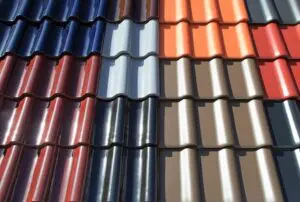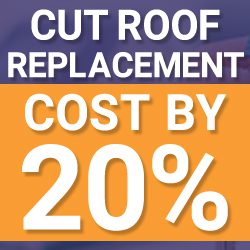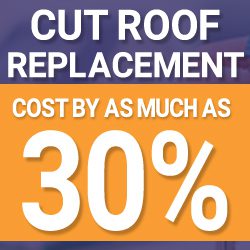
Choosing the Right Roof: Comparing Popular Roofing Materials for New Homes
Building a new home is an exciting journey that involves making numerous important decisions. One of the critical decisions is selecting the right roofing material. The roof is not only a significant architectural feature but also a key component that protects the home from the elements. With a plethora of roofing materials available, each offering unique benefits and drawbacks, choosing the right roof can be challenging. This blog will compare popular roofing materials, exploring their features, pros, cons, and suitability for different types of homes to help you make an informed decision.
Asphalt Shingles
Asphalt shingles are the most common roofing material in North America due to their affordability, ease of installation, and versatility. They are made from a fiberglass or organic mat coated with asphalt and mineral granules.
Pros
- Cost-Effective: Asphalt shingles are one of the most affordable roofing materials, making them a popular choice for budget-conscious homeowners.
- Variety: Available in a wide range of colors, styles, and textures, asphalt shingles can mimic the look of more expensive materials like slate or wood.
- Ease of Installation: Asphalt shingles are relatively easy to install, which can reduce labor costs and installation time.
- Durability: High-quality asphalt shingles can last 20 to 30 years with proper maintenance.
Cons
- Weather Sensitivity: Asphalt shingles can be susceptible to damage from high winds, hail, and extreme temperature fluctuations.
- Environmental Impact: Asphalt shingles are made from petroleum products and are not as environmentally friendly as some other roofing materials.
- Shorter Lifespan: Compared to materials like metal or tile, asphalt shingles have a shorter lifespan and may require more frequent replacement.
Suitability
Asphalt shingles are an excellent choice for homeowners looking for an affordable, versatile, and aesthetically pleasing roofing option. They are particularly well-suited for residential homes in moderate climates.

Metal Roofing
Metal roofing has gained popularity in recent years due to its durability, energy efficiency, and modern aesthetic. Common metals used for roofing include steel, aluminum, copper, and zinc.
Pros
- Durability: Metal roofs are highly durable and can last 40 to 70 years or more with proper maintenance. They are resistant to fire, rot, and insect damage.
- Energy Efficiency: Metal roofs reflect solar heat, which can reduce cooling costs by up to 25%.
- Low Maintenance: Metal roofing requires minimal maintenance and can withstand harsh weather conditions, including heavy snow, high winds, and hail.
- Eco-Friendly: Metal roofing is often made from recycled materials and is fully recyclable at the end of its lifespan.
Cons
- Cost: Metal roofing is more expensive upfront compared to asphalt shingles. However, its longevity and low maintenance can offset the initial cost over time.
- Noise: Without proper insulation, metal roofs can be noisy during rain or hailstorms.
- Expansion and Contraction: Metal expands and contracts with temperature changes, which can affect the fasteners and require periodic checks.
Suitability
Metal roofing is ideal for homeowners seeking a long-lasting, low-maintenance, and energy-efficient roofing solution. It is particularly suitable for homes in areas prone to extreme weather conditions and those looking to reduce their environmental footprint.


Wood Shingles and Shakes
Wood shingles and shakes offer a natural, rustic aesthetic that enhances the charm of traditional and historic homes. They are typically made from cedar, redwood, or pine.
Pros
- Aesthetic Appeal: Wood shingles and shakes provide a warm, natural look that complements various architectural styles.
- Insulation: Wood has natural insulating properties, helping to regulate indoor temperatures and improve energy efficiency.
- Longevity: With proper maintenance, wood roofing can last 30 to 50 years or more.
Cons
- Maintenance: Wood roofing requires regular maintenance, including cleaning, staining, and treating for mold, mildew, and insect infestations.
- Fire Hazard: Wood shingles and shakes are more susceptible to fire unless treated with a fire-resistant coating.
- Cost: High-quality wood roofing can be expensive, and the maintenance costs add up over time.
Suitability
Wood shingles and shakes are ideal for homeowners who prioritize aesthetics and are willing to invest time and money in maintenance. They are well-suited for traditional, rustic, and historic homes in areas with moderate climates.


Slate Roofing
Slate roofing is renowned for its natural beauty, durability, and longevity. Made from natural stone, slate tiles are one of the most premium roofing options available.
Pros
- Longevity: Slate roofs can last 75 to 100 years or more, making them a lifetime investment.
- Durability: Slate is highly resistant to fire, water, mold, and insects. It can withstand severe weather conditions, including heavy snow and high winds.
- Aesthetic Appeal: Slate offers a timeless, elegant look that enhances the curb appeal of any home. It comes in various colors and textures.
- Low Maintenance: Slate requires minimal maintenance due to its durability and resistance to environmental factors.
Cons
- Cost: Slate is one of the most expensive roofing materials, both in terms of material and installation costs.
- Weight: Slate is very heavy, requiring additional structural support, which can increase construction costs.
- Fragility: While durable, slate can be brittle and may break if walked on or subjected to impact.
Suitability
Slate roofing is an excellent choice for homeowners seeking a long-lasting, durable, and aesthetically pleasing roofing solution. It is particularly suitable for luxury homes and historic properties where the investment in high-quality materials is justified.
Clay and Concrete Tiles
Clay and concrete tiles are popular roofing materials known for their durability, longevity, and distinctive appearance. Clay tiles are made from natural clay, while concrete tiles are made from a mixture of cement, sand, and water.
Pros
- Longevity: Both clay and concrete tiles can last 50 to 100 years with proper maintenance.
- Durability: These tiles are resistant to fire, insects, rot, and extreme weather conditions.
- Aesthetic Appeal: Clay and concrete tiles offer a classic, Mediterranean look that enhances the beauty of various architectural styles.
- Energy Efficiency: The thermal properties of clay and concrete help regulate indoor temperatures, improving energy efficiency.
Cons
- Cost: Clay and concrete tiles are more expensive than asphalt shingles and some other roofing materials.
- Weight: These tiles are heavy and may require additional structural support, increasing installation costs.
- Fragility: Like slate, clay and concrete tiles can be brittle and may break if walked on or subjected to impact.
Suitability
Clay and concrete tiles are ideal for homeowners seeking a durable, long-lasting, and visually appealing roofing solution. They are particularly suitable for homes with Mediterranean, Spanish, or Southwestern architectural styles in warm climates.


Synthetic Roofing Materials
Synthetic roofing materials, also known as composite or engineered roofing, are made from a blend of plastic, rubber, and other materials designed to mimic the appearance of natural roofing materials like slate, wood, and clay.
Pros
- Affordability: Synthetic roofing materials are generally more affordable than their natural counterparts.
- Durability: Synthetic materials are designed to withstand harsh weather conditions, including high winds, hail, and extreme temperatures.
- Lightweight: These materials are lighter than natural options like slate and clay, reducing the need for additional structural support.
- Low Maintenance: Synthetic roofing requires minimal maintenance compared to natural materials.
Cons
- Aesthetic Appeal: While synthetic materials can closely mimic the look of natural materials, some homeowners may prefer the authenticity of the real thing.
- Longevity: While durable, synthetic roofing materials may not last as long as high-quality natural options like slate or clay.
Suitability
Synthetic roofing materials are an excellent choice for homeowners seeking an affordable, durable, and low-maintenance roofing solution that mimics the look of natural materials. They are suitable for various architectural styles and climates.



Green Roofing
Green roofing, also known as living roofs or vegetative roofs, involves the installation of a layer of vegetation over a waterproof membrane. This innovative roofing option offers numerous environmental and aesthetic benefits.
Pros
- Environmental Benefits: Green roofs improve air quality, reduce urban heat islands, and provide natural insulation, reducing energy consumption.
- Aesthetic Appeal: Green roofs create a unique and visually appealing landscape that can enhance the beauty of urban environments.
- Longevity: When properly maintained, green roofs can last longer than traditional roofing materials.
- Stormwater Management: Green roofs absorb rainwater, reducing runoff and alleviating pressure on stormwater systems.
Cons
- Cost: Green roofs can be expensive to install and maintain, requiring specialized expertise and materials.
- Weight: The additional weight of soil and vegetation may require structural reinforcement, increasing installation costs.
- Maintenance: Green roofs require ongoing maintenance, including irrigation, fertilization, and occasional plant replacement.
Suitability
Green roofing is ideal for environmentally conscious homeowners and urban buildings seeking a sustainable and visually appealing roofing solution. They are particularly suitable for flat or gently sloped roofs in urban areas.
Choosing the right roofing material for your new home is a critical decision that impacts not only the aesthetic appeal but also the durability, energy efficiency, and overall value of your property. Each roofing material discussed in this blog—whether it’s asphalt shingles, metal roofing, wood shingles and shakes, slate roofing, clay and concrete tiles, synthetic roofing materials, or green roofing—offers unique benefits and considerations.
By carefully evaluating the pros and cons of each option and considering factors such as climate, architectural style, budget, and maintenance requirements, you can make an informed decision that meets your needs and enhances your new home’s beauty and functionality. Consulting with a professional roofing contractor can provide additional insights and ensure that you select the best roofing solution for your specific situation.





Leave a Reply